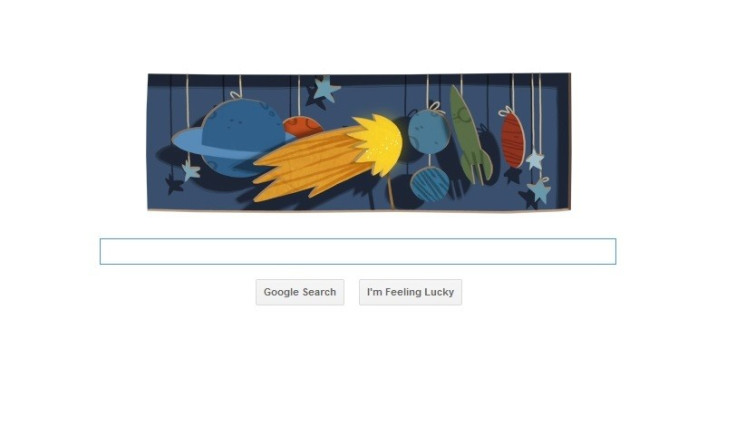New Google Doodle Celebrates Edmond Halley's Birthday

In honour of Britain's second Astronomer Royal, Edmond Halley, Google has changed its search engine's logo to a childlike rendition of Halley's comet souring through the sky.
The new Google doodle shows the famous comet flying past childlike cut-outs of planets being held up by strings.
Halley was born today in 1656 in Haggerston Shoreditch, London. Recorded as having a keen interest in mathematics, he later went on to study at St Paul's School and then Queen's College, Oxford.
It was at Oxford that he enacted a sizable portion of his studies into the solar system and met one of his key inspirations, John Flamsteed, the first Astronomer Royal.
Building on Flamsteed's work to compile a catalogue of the northern stars, Halley set out to do the same for the Southern Hemisphere. He began the project in 1678 when he travelled to the South Atlantic island of St Helena.
By the time he returned not only had he recorded and chronicled the celestial longitudes and latitudes of 341 stars, but also observed the transit of Mercury across the Sun's disc. The star catalogue Haley released in 1678 based on his work was the first ever to contain the telescopically determined locations of southern stars.
In the same year he completed the catalogue Halley was elected as a fellow of the Royal Society.
Following his success in 1704 Halley was appointed Savilian professor of geometry at Oxford University. The appointment did little to stop him continuing his work in astronomy, when in 1705 he published 'A Synopsis of the Astronomy of Comets.' The text described the parabolic orbits of 24 comets via collective observations taken between 1337 to 1698.
In it Halley showed that the three comets of 1531, 1607, and 1682 were in fact the same object. The object is now known across the world as Halley's Comet.
Not one to rest on his laurels, in 1716 Halley went on to devise a way to use observations of Venus' transits across the Sun's disk to accurately deduce the the distance of the Earth from the Sun.
Following his success, Halley succeeded Flamsteed as astronomer royal at Greenwich in 1720. Halley held the position until his death on 14 January, 1742.
© Copyright IBTimes 2025. All rights reserved.





















